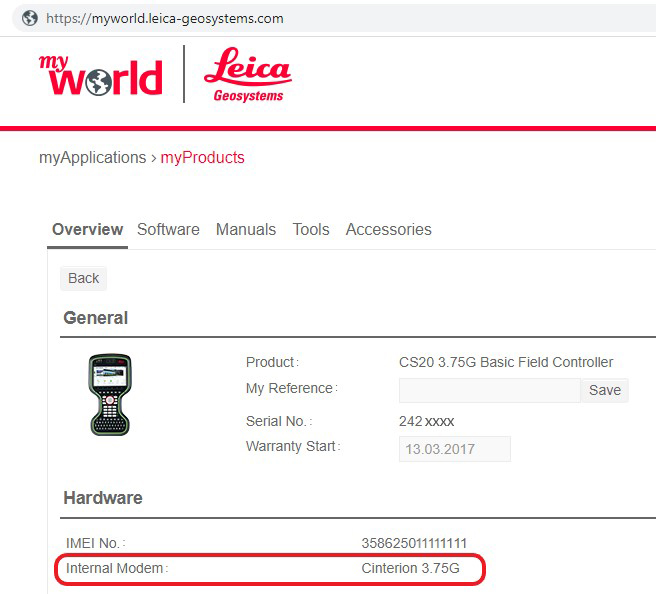
Around the world, mobile network operators are switching off their legacy 3G signals to accommodate newer 4G and 5G signals for modern devices, often referred to as sunsetting in the telecoms industry.

How does this affect Leica Geosystems users?
Mobile internet is a popular communication means for network RTK GNSS users plus for data transfer through cloud services so it is prudent to be prepared for the demise of the 3G signal.
When is this happening?
The mobile networks are switching-off in a gradual, phased approach across the regions. In the UK, the four main operators:
Vodafone is switching-off throughout 2023
EE is switching-off throughout 2023
Three expects to switch-off by the end of 2024
O2 has not yet announced any switch-off plans
Check with your mobile provider for the latest timings and for particular regions within the country.
There are many other virtual network operators that use the infrastructure of the four main networks. 3G switch-off timings for these providers will be in-line with the network they are based on.
In the UK, the telecoms regulator OFCOM has more information here
What does this mean for me?
Network RTK services such as HxGN SmartNet from Leica Geosystems is the most common use of a 3G signal. The 2G signal is set to continue but will also be switched off by 2033. Unlike video streaming, fortunately, the bandwidth required for network RTK is small and 2G signals are sufficient for the data packet sizes transmitted. Therefore, in the absence of a 3G signal, a 2G signal will be used, subject to coverage. Sometimes, GPRS and EDGE are referred to which are both 2G technologies.
Cloud services for data transfer such as Leica Exchange and ConX tend not to be continuously connected, rather are used for a data transfer when required. If your controller or tablet is not already 4G (LTE) then using a WiFi hotspot may be the simplest means to sending or receiving data to/from site.
Will I be affected?
For devices using a 3.5G or 3.75G modem, these can be classed as a later generation, faster 3G modem so will cease to receive a 3G signal when the networks switch off but will still receive 2G signals and users should not notice any difference in operation.
In readiness for the 3G switch off, since 2015, Leica Geosystems offer LTE (4G) modems in GNSS receivers and controllers (2019) and tablets (2015).
What can I do to prepare?
Where a 3G signal is unavailable, automatic roll-over to 2G signal* is the easiest action. Do check with your SIM card provider that a 2G data plan is available and active. If you use a GS18 and the SIM card is inserted in an affected controller such as the CS20 3.75G, then the simplest action is to relocate the SIM card to the GS18 as this already has a LTE (4G) modem (be sure to attach the GAT27 antenna to the 4G port).
For further peace-of-mind, it is recommended to have a dedicated, modern 4G or 5G capable mobile phone handset or mobile WiFi router (with own battery) alongside the controller or tablet in the field to share a personal hotspot with which can be used for the mobile internet connection (check your controller has WiFi or WLAN).
Or talk to your trusted Leica Geosystems representative or supplier for advice on current 4G capable devices compatible with your equipment.
To fully prepare, it is best to check the devices you use and the mobile networks on which these operate. To identify affected devices, it is suggested to review the internal modem characteristics of each device within myProducts at myworld.leica-geosystems.com

There are many devices affected, so for further details and specific guidance, please contact us techsupport.geo@sccssurvey.co.uk